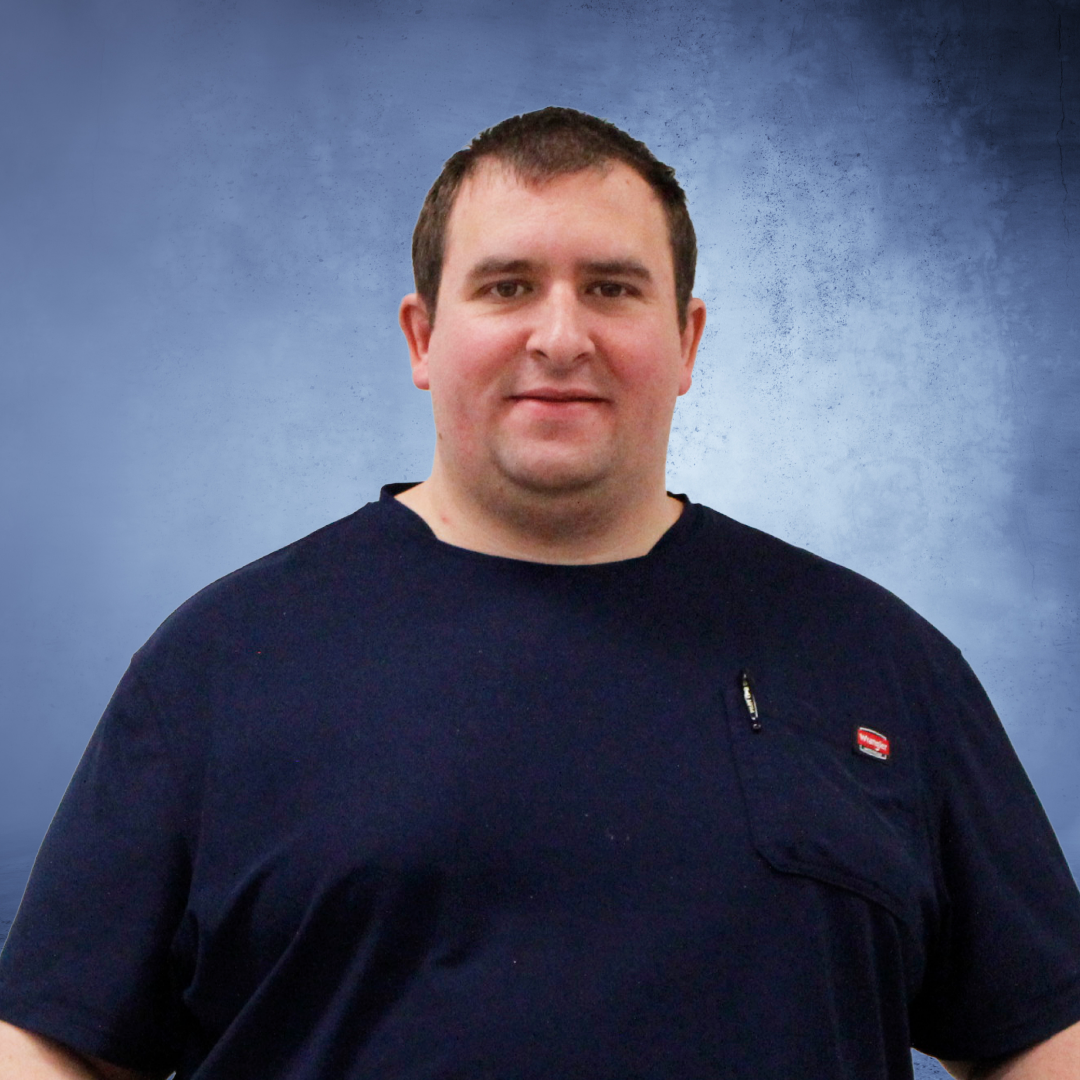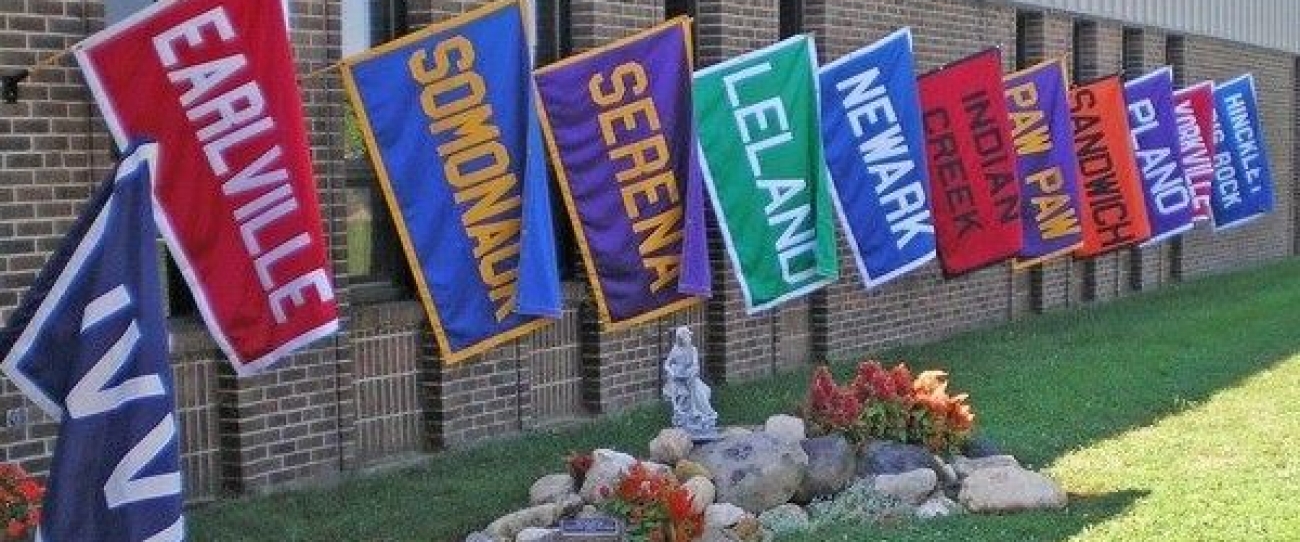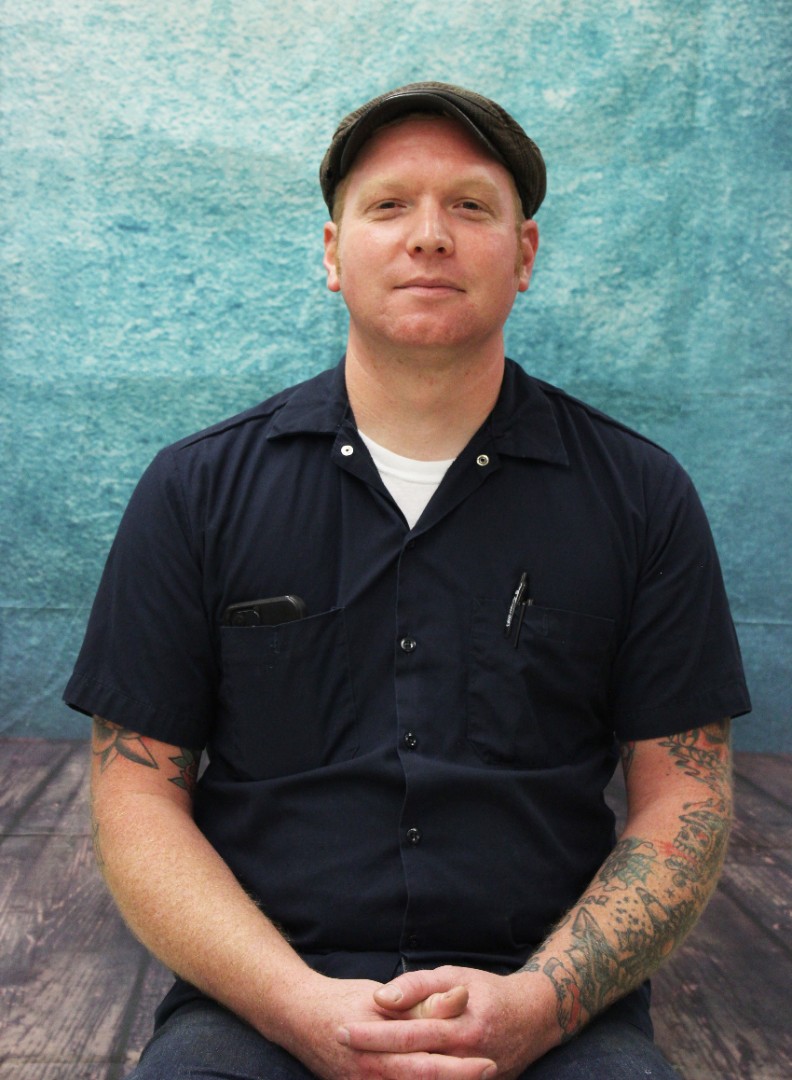Welding & Fabrication
Instructors: Tedd Moody & Jeremy Singer
|
|
Hello, my name is Tedd Moody. I began teaching Welding & Fabrication at IVVC in 2017. My background is fabrication/machine shop operation and I have owned and operated my own business for the past 12 years. I have worked in all aspects of the manufacturing industry from fast paced factory repair and welding to the precision aerospace industry. I am skilled in every type of welding process and position. Another one of my true passions is manual machining. I chose to teach because I want to help students learn to become quality welders and help mold them into talented and valued employees. As a high school student, I had a teacher who helped me turn my life around and prepare me for a successful future, and it is my hope to be that teacher for my students.
|
 |
Hello, my name is Jeremy Singer. I began teaching Welding and Fabrication at IVVC in August 2025, bringing with me over a decade of hands-on experience in the manufacturing side of the welding industry. Throughout my career, I've worked on a wide range of projects—from precision fabrication of small blower wheels used in helicopters to heavy construction equipment weighing several tons. I am skilled in all major welding processes and proficient in every welding position. Since 2016, I have also served as an adjunct welding instructor at the College of DuPage, where I’ve had the opportunity to share my expertise with the next generation of welders. Teaching has been a passion that began in sixth grade and has only grown stronger over time. I believe welders are among the most essential tradespeople in the world, and my goal is to prepare students at every level to step confidently into the field with skill, integrity, and a strong work ethic.
|
WELDING & FABRICATION I
Grades: 11, 12
Welding & Fabrication I is the first year of a two-year sequence.
Units of study - Shop safety, MIG welding, oxy acetylene welding, shielded metal arc welding, stick welding, blueprint reading, layout and fabrication processes
Tasks you will complete -
-
Weld components in flat and horizontal positions
-
Operate safety equipment and use safe work habits
-
Lay out, position, align, and secure parts and assemblies prior to assembly, using straightedges, combination squares, calipers, and rulers
-
Recognize, set up, and operate hand and power tools common to the welding trade, such as shielded metal arc and gas metal arc welding equipment
-
Select and install torches, torch tips, filler rods, and flux, according to welding chart specifications or types and thicknesses of metals
-
Ignite torches or start power supplies and strike arcs by touching electrodes to metals being welded, completing electrical circuits
-
Analyze engineering drawings, blueprints, specifications, sketches, work orders, and material safety data sheets to plan layout, assembly, and welding operations
-
Chip or grind off excess weld, slag, or spatter, using hand scrapers or power chippers, portable grinders, or arc-cutting equipment
-
Remove rough spots from work pieces, using portable grinders, hand files, or scrapers
-
Prepare all material surfaces to be welded, ensuring that there is no loose or thick scale, slag, rust, moisture, grease, or other foreign matter
-
Dismantle metal assemblies or cut scrap metal, using thermal-cutting equipment, such as flame-cutting torches or plasma-arc equipment
Skills/abilities you need to be successful - respectful & highly motivated, ability to follow instructions, ability to work as part of a team, problem-solving skills, willingness and ability to learn, hand and eye coordination, very detail oriented and organized, ability to work independently in the shop, dependability, manual dexterity, mathematics/measuring
Certification you may be eligible to receive upon successful completion -
-
OSHA-10 Safety Certification
Related careers - Ironworker, Pipefitter, Boilermaker, Assembler/Fabricator, Steam Fitter, Machinist, Tool and Die Maker, Sheet Metal Worker, Underwater Welder, Maintenance Welder, Sub Arc Operator, Construction Worker, Machine Operator
Dual Credit: WCC WLD 101 - Blueprint Reading (3 credits)
Articulated Credit: WCC WLD 101 - Blueprint Reading (3 credits), KCC WT 116 - Fundamental Welding Process (2 credits)
WELDING & FABRICATION II
Grade: 12
Required: 70% or higher in Welding & Fabrication I
Welding & Fabrication II is the second year of a two-year sequence.
Units of study - Overhead and vertical welding positions, variable diameter and thicknesses of pipe, specialized TIG welding processes in aluminum and stainless steel
Tasks you will complete -
-
Weld components in flat, horizontal, vertical, and overhead positions
-
Operate safety equipment and use safe work habits
-
Select and install torches, torch tips, filler rods, and flux, according to welding chart specifications or types and thicknesses of metals
-
Analyze engineering drawings, blueprints, specifications, sketches, work orders, and material safety data sheets to plan layout, assembly, and welding operations
-
Clamp, hold, tack-weld, heat-bend, grind or bolt component parts to obtain required configurations and positions for welding
-
Determine required equipment and welding methods, applying knowledge of metallurgy, geometry, and welding techniques
-
Monitor the fitting, burning, and welding processes to avoid overheating of parts or warping, shrinking, distortion, or expansion of material
-
Operate manual or semi-automatic welding equipment to fuse metal segments, using processes such as gas tungsten arc, gas metal arc, flux-cored arc, plasma arc, shielded metal arc, resistance welding, and submerged arc welding
-
Analyze engineering drawings, blueprints, specifications, sketches, work orders, and material safety data sheets to plan layout, assembly, and welding operations
-
Develop templates and models for welding projects, using mathematical calculations based on blueprint information
-
Repair products by dismantling, straightening, reshaping, and reassembling parts, using cutting torches, straightening presses, and hand tools
-
Calculate dimensions or tolerances, using instruments such as micrometers or vernier calipers
-
Machine parts to specifications, using machine tools, such as lathes, milling machines, shapers, or grinders
Skills/abilities you need to be successful - respectful & highly motivated, ability to follow instructions, ability to work as part of a team, problem-solving skills, willingness and ability to learn, hand and eye coordination, very detail oriented and organized, ability to work independently in the shop, dependability, manual dexterity, mathematics/measuring
Certification you may be eligible to receive upon successful completion -
-
OSHA-10 Safety Certification
Related careers - Ironworker, Pipefitter, Boilermaker, Assembler/Fabricator, Steam Fitter, Machinist, Tool and Die Maker, Sheet Metal Worker, Underwater Welder, Maintenance Welder, Sub Arc Operator, Construction Worker, Machine Operator
Dual Credit: WCC WLD 125 - Gas Metal Arc & Flux Cored Arc Welding (3 credits)
Articulated Credit: WCC WLD 100 - Survey of Welding (3 credits); WLD 115 - Oxy-Fuel Welding & Cutting (3 credits); WLD 120 - Shielded Metal Arc Welding I (3 credits), WCC WLD 125 - Gas Metal Arc & Flux Cored Arc Welding (3 credits)
Mr. Moody can be reached at (815) 786-9873, extension 247, or via email at TMoody@ivvc.net.
Mr. Rodriguez can be reached at (815) 786-9873, extension 240, or via email at NHRodriguez@ivvc.net.



